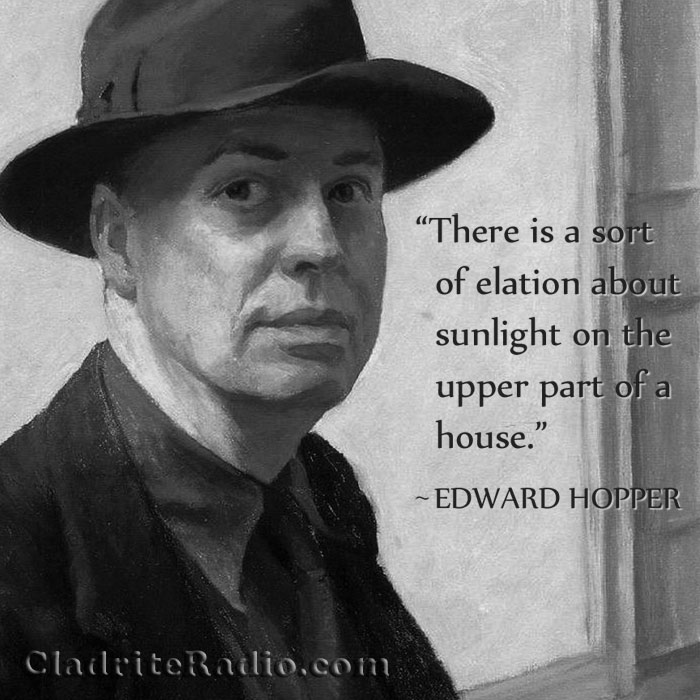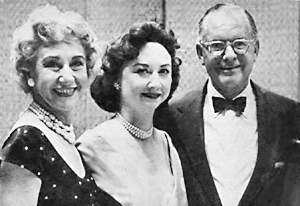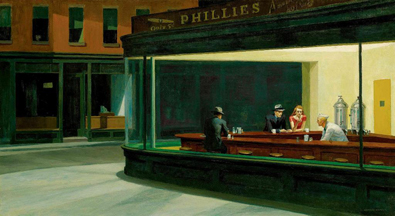Artist Edward Hopper was born 134 years ago today in Upper Nyack, New York. There are a great many painters who worked during the Cladrite Era whose work we admire, but if asked to choose our favorite, Mr. Hopper would get the nod. Here are 10 EH Did-You-Knows:
- Hopper was raised in a strict Baptist home. His parents encouraged and supported the young Edward’s childhood interest in painting and drawing.
- His first signed oil painting was Rowboat in Rocky Cove, painted in 1895, when he was just 13.
- Hopper was greatly influenced by the writings of Ralph Waldo Emerson. “I admire him greatly,” he once said. “I read him over and over again.”
- Hopper’s first art studies were via a correspondence course that he began in 1899. He then studied for six years at the New York School of Art and Design, the forerunner of Parsons School of Design, now part of The New School. Among his instructors were painters William Merritt Chase and Robert Henri.
- In 1905, Hopper took a part-time job with an advertising agency, but soon came to realize he had little interest in commercial illustration, though he used his illustrator skills to help pay the bills for more than 15 years.
- The first of Hopper’s many lighthouse paintings was Squam Light, painted in 1912 near Gloucester, Massachusetts.
- In 1910s and early ’20s, Hopper’s etchings of urban scenes in Paris and New York garnered the first attention he received from the public.
- His first solo exhibition opened in January 1920 at the Whitney Studio Club, the precursor to the Whitney Museum of American Art.
- Hopper’s wife, Josephine Verstille “Jo” Hopper (née Nivison), was also an artist and a student of Henri; she enjoyed some success into the 1920s, but little after that. After Hopper’s death in 1967, she bequeathed her entire artistic estate, along with her husband’s, to the Whitney, which soon thereafter rid itself of virtually all of her work.
- Freud’s theories about the subconscious mind held a great interest for Hopper, though he denied embedding psychological meaning in his paintings.
Happy birthday, Edward Hopper, wherever you may be!



